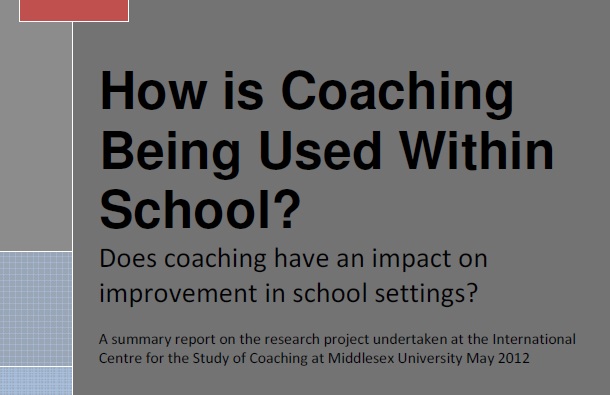As Jackie Arnold highlights in Chapter 19 of Coaching Skills for Leaders in the Workplace, “Organisational approaches to coaching” fall into three broad categories.
- Centralised and structured
- Organic and emergent
- Tailored middle ground
Following my visit to Wells Cathedral School, Somerset, and meetings with Head of School, Dr Andy Kemp and Coach Graham Norris, I learnt that at Wells, the adoption of Coaching was first organic and emergent, before moving to the tailored middle ground. Here is what I learnt from my visit.
Head of School, Dr Andy Kemp
I took a measured drive across to Wells Cathedral School, a familiar drive as far as Longleat and beautiful too. I knew little of it heritage as (motto esto quod es – be what you are) and music focus. Approaching 800 students, half boarding, 180 teaching staff (many connected to music), there was a relaxed, home-from-home, boarding atmosphere that is hard to describe.
After seeing Andy post share his enthusiasm for whole school staff training around Coaching I reached out for a conversation to learn more. Keen to get a ‘feel’ for a Coaching-school, I asked if I could visit.
Coaching at Wells
Coaching arrived at the school by chance. Graham Norris was a part-time member of staff and had a Coaching background. In addition to his contracted employment (not as a Coach), these Coaching skills were utilised to support staff at opportune moments and highly valued. Second, the Head Teacher (at the time) had experienced Coaching herself and had extended opportunities for senior team to engage and contribute to her Coaching experience. Coaching was facing an open-door.
Recognising the contribution made by Coaching, the senior team moved towards a more comprehensive review of where and how Coaching may support the development and culture of the school. From this outlook an organic and emergent Coaching ethos started to take shape.
Coaching – was evolved and is currently being presented three-fold.
- Developing ‘Coaching skills’ (Level 3) AND/OR
- An opportunity to be Coached AND
- Whole school Coaching INSET.
The first two, options are available to staff from an enviable Professional Development offer made by the school (along-side peer collaboration through a Lesson-Study style investigation, pedagogical Research Project and supported, external 360 review). In additional, formal Coaching was employed strategically, for a “wide range of reasons.” Furthermore, the decision to invest in a whole school INSET day, delivered to all staff, to communicate the broad overview and support for Coaching was made by senior team to promote a coaching ethos. Lastly, Coaching offered an excellent alternative to counselling for ‘senior students, under specific circumstances,’ for example, managing examination revision or a heavy music rehearsal schedule.
I asked “How do you measure the return on your investment?” Of course, the expenditure was known however there was no explicit metric to reference. There was plenty anecdotal evidence that Coaching made a difference to individual staff personally-professionally and to improving departmental leadership and interpersonal relationships.
Graham Norris
Graham started by outlining the importance of staff ‘confidence in the [coaching] process.’ In doing so, he outlined that, although there are many different Coaching models available and that these mattered less, than building a relationship with staff.
I had planned to and did still ask Graham if a particular model had been adopted. The simple answer – no. Graham went on to present a strong case for “a flexible and open approach” to coaching, again reaffirming that building a rapport, analysing the gaps, and closing the gaps, was more important than the model which are largely consistent.
Where are we now. Where do we want to be. Building the bridge. Review.
Invested in Coaching
Graham and I spent most of our time discussing the development of ‘Coaching Skills’ (Level 3) and subsequently the whole-school INSET. That was, after all the main aim of the visit, to understand how Coaching was launched, delivered and the impact thereafter. Also, the formal Coaching of staff was, rightly so, bound by confidentiality.
On that point we did briefly discuss the importance of confidentiality and trust. Graham noted that as confidentiality was maintained, so trust deepened. At this point Graham offered a very tangible demonstration that I think it worth sharing.
“Trust is like a piece of paper,” he said. “Scrumple it up into a ball, and then unravel it… you can try all you like, you can never get all the creases out no matter how hard you try.” Or words to that effect.
Coaching skills (Level 3)
Wells staff have the opportunity to complete an accredited Coaching course. Graham estimated that approximately half of the staff were now open and available to Coach others. As well as benefiting from the professional learning themselves. The following day I emailed Graham to asked if those that made themselves ‘available’ as Coaches shared any common traits.
…They consciously ‘attend’ to other people, come across as genuine and honest, are noticeably present with other people and have that ability to connect in terms of generating rapport. They somehow come across as grounded, easy to be with, caring and above all appear to be genuinely interested in supporting others
With a very loose understanding of supervision, I asked about support for the internal coaches. This was more informal, with Graham making a conscious effort to speak with the internal coaches when at Wells.
As for the whole school INSET, it was used to explain and provide an experience of “non-directive coaching.” Largely experiential, staff got to experience a coaching process for themselves, rather than getting bogged down in explanation and definition. Second, it included an introduction to the skills of active listening, in an effort to show staff that Coaching is more than just a “cosy chat.”
Takeaways
Could schools gain the momentum what Wells have achieved without an Internal Lead Coach and Coach accreditation / trainer? I fear not.
Head Teacher / senior teacher support – appears strongest when they themselves have experienced being Coached.
Experience of being Coached creates Coaching advocates and staff report feeling valued. Investing in opportunities for key staff to be ‘Coached’ is a covert introduction model that primes the organisation to move towards a Coaching culture. Also, if coachees are selected carefully, it may radiate that message and may also help retain staff.
Introducing Coaching – remains a change management process. Where it evolves organically and emergently, sufficient time allows for trust to develop. That is important.
The final point, though not made explicitly, there is still difficulty to communicating what Coaching is, and is not. Graham adopting a “large experiential” approach, using “Coaching skills” as opposed to Coaching. The reflection being, Awareness and Knowledge (ADKAR) of Coaching within any change process needs extra consideration due to this inherent and persistent hurdle.
25.2.19 – the conversation with Graham continues vis email and continues to be enlightening. Staff retention is an important measure to take note of. Where staff retention is very high, introducing new ideas, can be more difficult.
In Graham’s wider professional outlook, Coaching is quite some way behind “modern commercial / business world.” What was more interesting was that Graham shared the view that in education, “coaching was seen as a remedial intervention.” Without leaders/teachers being given a comprehensive introduction, I can see why staff invited to being coached, would think that to be the case.


